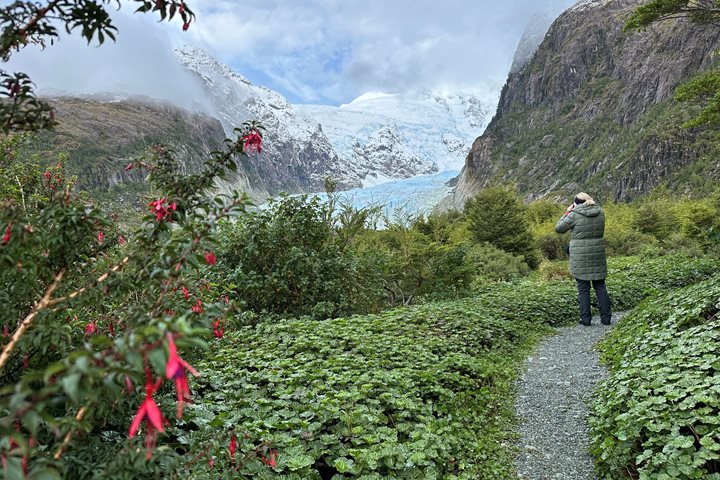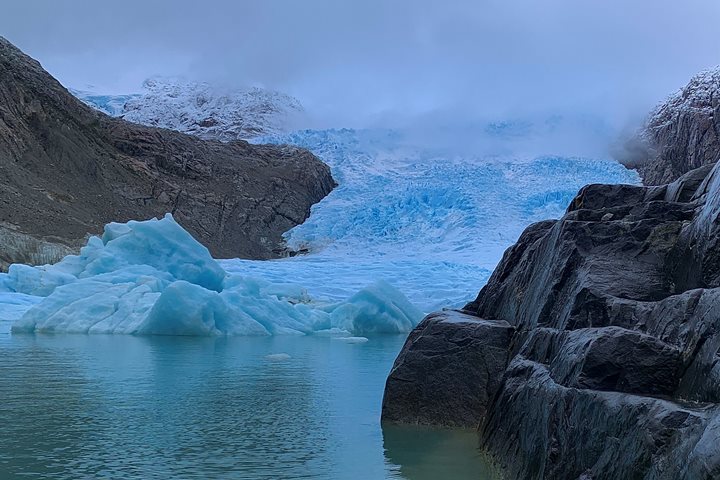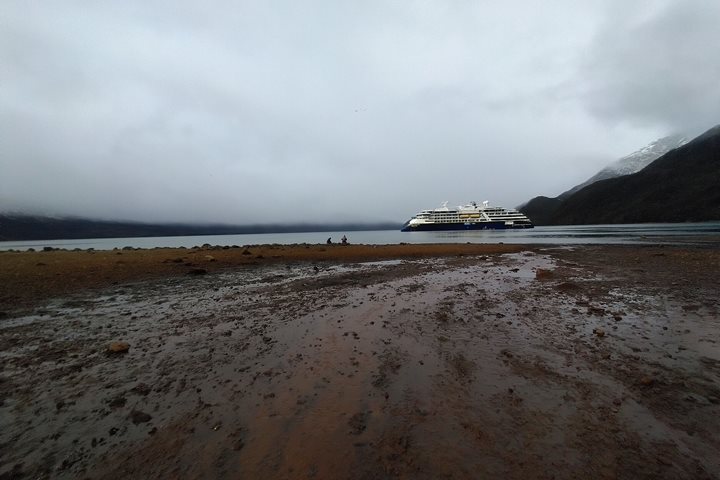The sun rose a little before seven o’clock this morning casting a brilliant alpenglow of pink light on the snowcapped peaks surrounding the English Narrows of Chile. The beautiful and striking fjord system is only 200 yards (180m) wide in places and is dotted with small islands before the steep forested hills rise out the water and ascent thousands of feet high where fresh snow lies and lenticular clouds shroud the peaks.
Just before lunch we rounded a corner in the channel and turned north into Eyre fjord. Navigating up this waterway continued to provide spectacular views and ice began to appear, providing excellent foregrounds and interest for the eye. At the head of the fjord lies Pio XI glacier, the largest western outflow from the Southern Patagonian Ice Field. Not only has that, but Pio XI also held the record for the longest glacier in the southern hemisphere outside of Antarctica, at 41 miles in length.
As the last of the lunch plates headed back to the dishwasher, a beautiful view of the glacier toe was revealed and expedition leader Lucho made an announcement that we would be touring the area by zodiac for the afternoon’s activities. Guests and staff were divided into boats and set about discovering the impressive site. Not too long into the surveys of the area, a fellow zodiac was discovered carrying and dispensing hot chocolate by some friendly, if grizzly, occupants. A real treat. Some were treated to the first sightings of the massive Adean Condor. A gigantic bird that can STAND over four feet tall and boasts a wingspan of up to eleven feet. Luckily for those that missed it, our naturalist team reassured us of many more sighting opportunities to come.
The bridge team also made interesting observations today about the bathymetry of the area and of the glacier itself. Last year the National Geographic Explorer anchored at the toe of Pio XI glacier as well but the much further up the fjord, and in deeper water. The glacier has been advancing for many years and already the charts on the bridge were inaccurate. Not only had the ice area changed but in its rapid advance, the glacier had bulldozed up the bottom, creating a terminal moraine underwater and bringing the bathymetry up twenty meters (36 feet)! The underwater team went to investigate the bottom for themselves and discovered spider crabs, bivalves, but not a lot else. The finely ground sediment from the glacier remained in the water column and visibility was quite low.
Our entire day has been full of striking landscapes and the drama of the sea. Everything from 10,000 foot mountains rising out of a sea of ice, to narrow channels of ocean water winding through pristine wilderness.





